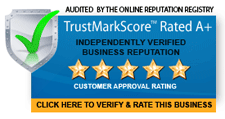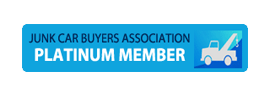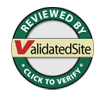Introduction: The 2025 Car Buying Landscape
Online car shopping is now mainstream, with at‑home test drives, digital consultations, and transparent price quotes shaping a smoother path from research to delivery, and for readers considering converting an unwanted car into cash, junk cars for money: the ultimate buyer’s guide to getting top cash offers practical guidance.
If you’re selling an old or junk car to free up space or cash, you can follow the how to sell or get rid of junk cars: step-by-step guide, and Junk Car Chicago can provide a quick, transparent cash offer with free towing, helping you turn an asset into value without hassle.
New vs Used in 2025: How to Decide
In 2025, new cars come with the latest safety tech, warranty coverage, and peak reliability—yet they carry higher upfront costs and quick initial depreciation. Used vehicles, including Certified Pre‑Owned (CPO) options, can deliver substantial savings while still offering inspected condition guarantees and extended warranties. Inventory dynamics vary by model year and segment; remaining 2024–2025 stock often features favorable pricing, while EVs may command premium in certain markets due to charging networks and battery supply considerations.
The choice between new and used hinges on how you value risk, upfront cash flow, and long‑term ownership. If you prize the absolute newest safety tech and the comfort of a bumper‑to‑bumper warranty, a new car may be worth it. If you want more value with strong warranties and a longer period before model refreshes, a well‑selected used or CPO model can be a smarter move.
New Cars
Total cost of ownership
New cars generally incur the highest upfront price and the steepest first‑year depreciation, but they offer predictable maintenance costs and the longest coverage window. You’ll start with a higher sticker price and a higher annual insurance premium in many cases, yet you’ll benefit from the latest safety features that can lower the risk of accidents and, in turn, potential claim costs. Over a 3–5 year horizon, the gap in ongoing maintenance costs often narrows because major components are under warranty.
Depreciation and resale value
Depreciation hits hardest in the first year for new vehicles, with a typical reduction that can range from 15% to 25% depending on model and demand. A key advantage of buying new is knowing the exact maintenance history and the likelihood of trouble‑free operation early in ownership, which can positively influence resale prospects if you decide to trade in or sell later.
Warranty and maintenance coverage
You gain peak warranty protection on a new car—often 3 years/36,000 miles bumper‑to‑bumper and 5 years/60,000 miles powertrain—as well as routine maintenance programs in some packages. These programs bring peace of mind and can simplify budgeting for the first several years of ownership, especially if you drive more miles or prefer dealer service.
Financing terms and APR
New cars typically qualify for promotional APRs and dealer incentives that can lower the effective cost of financing. Terms vary, but longer loan durations can reduce monthly payments at the cost of more total interest over time. If you can secure a low‑APR loan or favorable lease, you may offset some upfront sticker price disadvantages, though it’s essential to compare total cost across options.
Incentives and rebates
Federal and state incentives may apply, including EV credits for eligible plug‑ins and hybrids. Manufacturer promotions can also reduce the effective price. It’s crucial to verify current eligibility, as credits and caps change with policy and battery supply rules.
Reliability and safety ratings
New vehicles benefit from the latest safety engineering and IIHS/NHTSA testing outcomes, providing clearer expectations for crash protection and automated safety systems. Expect strong performance in most mainstream brands, especially when new generations roll out with improved ADAS features and software integrity.
Insurance costs and taxes
Insurance for new vehicles tends to be higher due to replacement value and comprehensive coverage needs. Tax implications can also shift depending on vehicle type (gas vs EV) and state laws; both factors weigh into your year‑over‑year ownership costs.
Used Cars (including Certified Pre‑Owned)
Total cost of ownership
Used vehicles typically cost less upfront and can offer excellent value if you avoid high‑mileage examples or models with expensive parts. Insurance is often lower, and depreciation has already occurred. However, maintenance costs may rise as the vehicle ages, so you should factor potential repairs and the need for a reliable warranty plan.
Depreciation and resale value
A well‑chosen used car can retain value reasonably well, especially if it’s in high demand, has a solid reputation for reliability, and remains under an extended warranty (CPO). CPO programs add assurance and can mimic some benefits of new cars without the same price tag.
Warranty and maintenance coverage
Many used cards come with limited factory warranties or available extended warranties. CPO programs enhance confidence by providing rigorous inspections and some degree of coverage, though the specifics differ by brand and program. Read the fine print to understand what is covered and for how long.
Financing terms and APR
Used‑car financing is typically more expensive than new car financing, with higher APRs and shorter terms common. A solid credit profile, a larger down payment, and shopping across multiple lenders can improve terms significantly.
Incentives and rebates
Used buyers rarely contend with manufacturer rebates that apply to new cars, but there can be regional incentives or dealership promotions. EVs and hybrids may have eligibility criteria for state credits even for used purchases, though these programs vary widely by location and vehicle age.
Reliability and safety ratings
Used cars benefit from a documented history, history reports, and independent service records. Check for recalls and common failure points for the specific model year you’re considering, and consult IIHS and NHTSA safety ratings for that model family.
Insurance costs and taxes
Insurance for used cars is typically lower, reflecting lower replacement costs. Taxes are usually based on the purchase price, but some states handle vehicle taxes differently when buying used versus new, so confirm local rules before signing.
Budgeting and Total Cost of Ownership
A disciplined TCO approach reveals the money behind the sticker price. Start with depreciation, financing costs, and insurance, then add maintenance, taxes, and energy costs. For EVs, include home charging installation, electricity rates, and potential battery degradation risk. Use online TCO calculators and dealer quotes to surface real‑world numbers and catch surprises before you sign.
A practical 3–7 year TCO frame keeps the decision grounded: what will you pay each year, and how does that compare across options? In 2025, EVs often compete well on lifecycle costs when charging is convenient, incentives apply, and battery health remains strong. For internal combustion engine (ICE) vehicles, maintenance costs can be higher as they accumulate miles, but upfront pricing can be favorable depending on model and timing.
Financing and Leasing in 2025

Interest rates in 2025 continue to reflect borrower credit, vehicle type, and term length. Longer loans generally reduce monthly payments but increase total interest, especially if term lengths extend to six years or more. Leasing can lower monthly costs and simplify upgrades, but it comes with mileage limits and potential end‑of‑lease charges that can surprise if you exceed wear and tear expectations.
Compare manufacturer promotions, regional lender offers, and state/federal incentives across multiple lenders and online platforms. EV credits and other incentives can shift quickly as policy evolves, so verify eligibility for the specific vehicle you’re considering and confirm how credits apply at the point of sale.
Negotiating the Deal: Getting the Best Price
Do upfront research on MSRP versus invoice, factory incentives, and current rebates. Gather formal price quotes from multiple dealers and be ready to walk away if a deal doesn’t meet your threshold. Negotiate price first, before discussing trade‑ins or financing, and watch for add‑ons, padded documentation fees, and unnecessary dealer upgrades. Don’t forget the destination charge and any dealer handling fees—these can influence the bottom line just as much as the sticker price.
Timing can matter—month‑end or quarter‑end targets can yield favorable terms as dealers push to meet quotas. Use online quotes to benchmark ahead of visits, and bring your own financing terms to the table to avoid back‑and‑forth that mysteriously shifts the overall cost.
Buying Online vs In-Store: Platforms and Practices in 2025
Online platforms like Carvana, CarMax, and manufacturer portals offer broad inventories, home delivery, and flexible return windows. They also require careful scrutiny of the fine print: return policies, warranties, and eligibility for service under the platform’s terms. Virtual test drives, remote signing, and at‑home delivery reduce friction, but you still need to verify vehicle history, title status, and service eligibility.
If you’re buying online, insist on a detailed vehicle history report, corroborate the odometer with photos or service records, and confirm that the car is not subject to open recalls. If you’re buying from a traditional dealership, request a transparent, itemized quote and verify any add‑ons or protective coatings that you actually want.
EVs, Hybrids, and the 2025 Market

The electric vehicle (EV) share of new‑car sales continues to rise as battery technology improves and charging networks expand. When evaluating EVs, prioritize access to charging infrastructure, home charging readiness, battery warranty coverage, charging speed, and the total ownership cost versus an ICE or hybrid in your daily life. Certified pre‑owned EV programs are expanding, but you should verify battery health, remaining warranty, and included service options before purchasing.
A practical approach: map your daily driving needs to range, charging access, and total fueling costs. Even with the higher upfront price, EVs can win on TCO if your electricity rate is favorable, you have convenient home charging, and the vehicle carries solid warranty protections. Remember to factor in potential battery degradation and the cost of eventual battery replacement if needed, though market data suggest improvements in battery longevity and replacement economics over time.
Expert perspective: In 2025, the total cost of ownership for many EVs is trending downward as battery costs keep falling and charging networks expand, making EVs a practical option for more households.
Safety, Tech, and Interior Features Worth Prioritizing
When judging a car’s value, prioritize real‑world safety and reliability over flashy marketing. Focus on advanced driver‑assistance systems (ADAS) with proven performance, OTA software update capabilities, and robust warranty coverage. For connectivity, look for seamless smartphone integration (Apple CarPlay/Android Auto), intuitive infotainment, wireless charging, and a crisp digital instrument cluster. Use independent safety ratings from IIHS and NHTSA to guide your expectations and avoid over‑reliance on marketing claims.
In 2025, the pace of software updates means cars can improve after you take delivery, so choose a platform with strong service options and a track record of reliable updates. A well‑designed interior that reduces driver fatigue and offers ergonomic controls can significantly affect long drives and daily use, which matters whether you own a compact commuter or a family SUV.
Step-by-Step Buyer’s Checklist: A 5‑Step Process
- Step 1: Define your needs and budget. List must‑haves, nice‑to‑haves, and a firm ceiling for total cost of ownership.
- Step 2: Shortlist options and gather feature priorities, trims, and safety ratings from trusted sources.
- Step 3: Collect quotes from multiple sources, explore incentives, and compare financing terms. Schedule test drives or home demonstrations as needed.
- Step 4: Verify vehicle history (for used cars), confirm CPO terms if applicable, and inspect warranties and service plans.
- Step 5: Review the contract in detail, confirm warranty coverage, finalize financing/delivery, and arrange pickup or home delivery.
Resources, Tools, and Quick Reference
Use online calculators to compare total cost of ownership, track incentives, and estimate insurance costs. Bookmark reputable review sites and IIHS/NHTSA safety ratings as ongoing references during your search. Create a simple buying plan that captures your needs, budget, and a realistic timeline, and keep a log of quotes and test‑drive notes to stay organized.
If you’re facing the practical need to dispose of an unwanted vehicle, Junk Car Chicago offers cash for junk cars with free towing, rapid payment, and a hassle‑free process. We help customers maximize value—even when the car is not running—and provide a straightforward path to clearing space and funds.
Ready to turn your unwanted vehicle into quick cash? Kelly Car Buyer, Inc makes it easy to sell almost any type of vehicle—including cars, junk cars, trucks, semi-tractors, and trailers—regardless of condition. Don’t wait to get the best offer—click now to discover how simple and hassle-free selling your vehicle can be, and enjoy fast, top-dollar payouts today!








